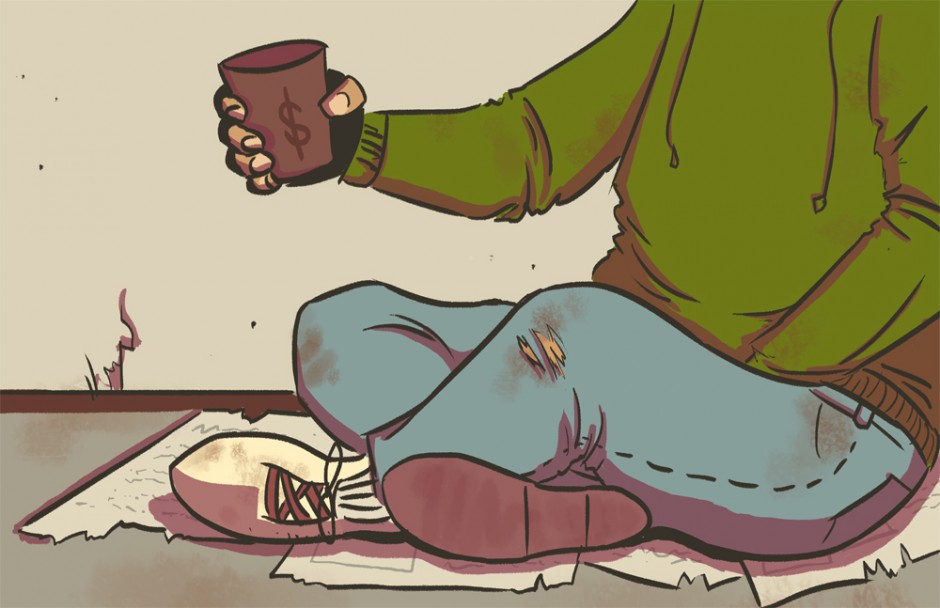At U of T, a multitude of charitable causes and organizations, supported by dedicated student groups who manage clubs and organize events, do their best to make an impact on campus and beyond. With such a diverse catalogue of causes to support, basic economic questions arise. Donations have become an issue of ethical accountability — writing a cheque is no longer enough. Now, one must be concerned with where and how the money is being spent and whether the organizations’ approach effectively solves the issue at hand or is merely a Band-Aid solution.
An area where the idea of sustainable aid is becoming increasingly important is poverty, particularly in the context of homelessness. There is a misconception that poverty has an easy solution — money. While money may play a key role in the solving the problem, it does not address the individualized nature of homelessness and the underlying personal struggles that contribute to it.
As a result, solutions for urban poverty and homelessness are polarized around two aims: solving immediate and imperative needs such as hunger and shelter, and encouraging a philosophy of self-help and sustainability by giving affected individuals a voice in their solutions.
Julia Gray, a McGill student and founder of JGray Initiative, a Montreal charity working to combat urban homelessness, spoke with The Varsity about the impact perceptions of legitimacy have on organizations aiming to combat social problems. JGray, in partnership with the Salvation Army, facilitates a YMCA social reinsertion and drug therapy program.
The founding ideal behind Gray’s project, which began as a response to her uncle’s experience with homelessness, was to “give individuals a tool where they can take accountability of their life, so people can make their own changes.”
The program is a response to a problem Gray associates with many non-profit organizations, which is a focus on providing immediate aid without helping individuals restructure their lives.
“[By] defaulting a lot of people as victims, you create a victim; you take the power away from the individual,” she says. “[People] then tend not to take their own steps to overcome the situation that they’re in,” she says.
This tendency to victimize the poor, as Gray explains, although coming from a place of sympathy, can have the adverse effect, categorizing these individuals as victims who cannot take control of their situation. They become a cause to be helped rather than individuals who, with support, have the potential to help themselves. This perspective manifests in a donor-receiver style of giving, that, according to Gray, is a palliative method which doesn’t effectively take anyone off the streets.
She cites the At Home research program on homelessness and mental illness, which facilitated a study where subjects are given requisite support and housing for a two-year period, after which the support is withdrawn. Gray points out the potential flaws in this style of programming — if support is withdrawn too quickly, individuals can easily relapse into their previous states of poverty and homelessness.
How and where people choose to give remains a highly personal decision, which can depend on organizations’ time contributions, resource management, and donors conceptions of what it means to “help.”
It’s dangerous to generalize about homelessness and assume that one blanket solution or strategy will successfully resolve problems. It is important to separate supporting the cause from the individual, understanding that the former can only be achieved with an understanding of the latter. A nuanced perspective is required to understand these problems and determine how to make an effective and positive difference.
